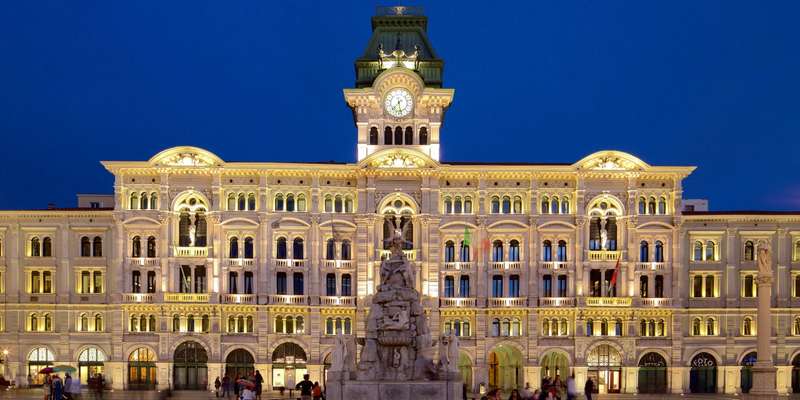- Home
- Useful Tips
- Best ways to experience...
Over 70% of visitors to Trieste miss its most authentic Austro-Hungarian experiences, according to local tourism boards. The city's complex heritage - a blend of Viennese grandeur and Adriatic charm - often gets reduced to quick photo stops at major landmarks. This leaves travelers with surface-level impressions and crowded itineraries. Meanwhile, the true soul of Trieste lives in its lesser-known coffee houses, Habsburg-era courtyards, and maritime traditions that even many guidebooks overlook. The frustration compounds when you realize how close you were to these hidden layers - just one wrong turn or rushed schedule away from discovering the city's imperial past in its most vivid form. With cruise ship day-trippers increasing by 18% annually, finding quiet moments to connect with Trieste's history requires local knowledge most tourists never access.


Timing your visit to avoid the Habsburg heritage rush
Trieste's Austro-Hungarian landmarks follow distinct crowd patterns that most visitors never learn. The iconic Unity of Italy Square empties completely by late afternoon as tour groups retreat, becoming the perfect time to admire its Viennese-style buildings in golden light. Local archivists note that midweek mornings see the lowest numbers at the Revoltella Museum, where you can have entire galleries of Habsburg-era art to yourself. An insider trick involves visiting the Grand Canal district during the traditional Italian lunch hour (1-3pm), when the nearby cruise passenger restaurants fill up, leaving the waterfront's Austrian commercial houses blissfully quiet. Even in peak season, these timing strategies create space to appreciate architectural details like the twin caryatids on Palazzo Carciotti or the hidden Masonic symbols on Palazzo Gopcevich without jostling for views.
Mapping Trieste's secret imperial coffee houses
Beyond the famous Caffè San Marco, seven surviving Austro-Hungarian coffee houses retain their original 19th-century interiors - if you know where to look. Start at Caffè Tommaseo, where the marble-topped tables and Bohemian crystal chandeliers have hosted political debates since 1830. Their house blend still follows the Habsburg-era recipe created to please Viennese naval officers. For a more local experience, seek out Antico Caffè Torinese near the Stock Exchange, where Triestine merchants have conducted business over tiny cups of 'capo in b' (Trieste's unique macchiato) since 1915. The staff at both establishments will share stories about regular patrons like James Joyce or Italo Svevo if you visit during quieter mid-afternoon hours. These living museums of coffee culture cost nothing to enter beyond the price of an espresso, making them among the most authentic - and affordable - ways to touch Trieste's imperial past.
Decoding Habsburg architecture in unexpected neighborhoods
The residential district of San Giacomo holds Trieste's best-preserved examples of Austro-Hungarian civic planning, completely missed by standard walking tours. Here, entire blocks of pastel-colored Wohnhäuser (apartment buildings) retain their original wrought-iron details and courtyard fountains installed for Habsburg civil servants. Look for the recurring motif of maritime stars and double-headed eagles above doorways - subtle nods to the empire's naval ambitions. Local historians recommend starting at Via Crispi 8, where a perfectly intact 1850s staircase leads to rooftop views mimicking those enjoyed by 19th-century harbor controllers. Further south, the former workers' quarter of Roiano conceals extraordinary Secession-style villas built for Hungarian merchants, their floral stucco work still vibrant after careful restoration. These neighborhoods require no tickets or opening hours, just a curious eye for architectural storytelling.
Finding authentic Austro-Hungarian flavors beyond tourist menus
Trieste's culinary heritage preserves unique Habsburg-era dishes that many restaurants simplify for visitors. The authentic version of jota (sauerkraut soup) still uses smoked pork ribs from the Karst plateau, just as imperial army chefs demanded. Family-run Buffet Da Pepi serves theirs in an unchanged 1908 recipe, complete with the mandatory teaspoon of vinegar that Viennese officers insisted upon. For sweet endings, Pasticceria Pirona's presnitz pastry follows Archduke Maximilian's exact 1860 specifications, with walnut filling wrapped in paper-thin dough. Locals know to ask for the 'version originale' at both establishments to avoid tourist adaptations. These living gastronomic traditions transform meals into edible history lessons, with no premium charged for authenticity - a main course at Buffet Da Pepi costs about what you'd pay for a sandwich near the cruise port.



